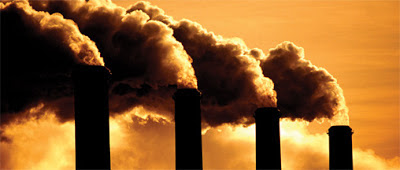UPDATED January 13th, 2013. Scroll through.
 | |
| Above and below, shots I took at my in-laws' northern Alabama farm recently. They will lose hundreds of acres of corn, despite being on the "periphery" of the drought zones. |
 |
| Above, one of my Lake Mead / Hoover Dam shots not too long ago. |

Arctic ocean losing 50% more summer ice than predicted
By Robin McKie, The Observer
Saturday, August 11, 2012 18:55 EDT
By Robin McKie, The Observer
Saturday, August 11, 2012 18:55 EDT
"Sea ice in the Arctic is disappearing at a far greater rate than previously expected, according to data from the first purpose-built satellite launched to study the thickness of the Earth’s polar caps.
Preliminary results from the European Space Agency’s CryoSat-2 probe indicate that 900 cubic kilometers of summer sea ice has disappeared from the Arctic ocean over the past year.
This rate of loss is 50% higher than most scenarios outlined by polar scientists and suggests that global warming, triggered by rising greenhouse gas emissions, is beginning to have a major impact on the region. In a few years the Arctic ocean could be free of ice in summer, triggering a rush to exploit its fish stocks, oil, minerals and sea routes.Using instruments on earlier satellites, scientists coul
d see that the area covered by summer sea ice in the Arctic has been dwindling rapidly. But the new measurements indicate that this ice has been thinning dramatically at the same time. For example, in regions north of Canada and Greenland, where ice thickness regularly stayed at around five to six meters in summer a decade ago, levels have dropped to one to three meters..."
Click to enlarge. Web link here.
Climate scientist Tim Flannery ("The Weather Makers"):
...the power and seduction of fossil fuels will be hard to leave behind. If humans were to look to biomass (all living things, but in this case particularly plants) as a replacement, we would need to increase our consumption of all primary production on land by 50 percent. We're already using 20 percent more than the planet can sustainably provide, so this is not an option...Think about that.
In 1961 there was still room to maneuver. In that seemingly distant age, there were just 3 billion people, and they were using only half of the total resources that our global ecosystem could sustainably provide. A short twenty-five years later, in 1986, we had reached a watershed, for that year our population topped 5 billion, and such was our thirst for resources that we were using all of Earth's sustainable production.
In effect, 1986 marks the year that humans reached Earth's carrying capacity, and ever since we have been running the environmental equivalent of a budget deficit, which is sustained only by plundering our capital base. The plundering takes the form of overexploiting fisheries, overgrazing pasture until it becomes desert, destroying forests, and polluting our oceans and atmosphere, which in turn leads to the large number of environmental issues we face. In the end, though, the environmental budget is the only one that really counts...
...By 2001 humanity's deficit had ballooned to 20 percent, and our population to over 6 billion. By 2050, when the population is expected to level out at around 9 billion, the burden of human existence will be such that we will be using -- if they can still be found -- nearly two planets' worth of resources." [pp. 78-79]
As I wrote in February 2009 on another of my blogs:
We can choose to continue to drill, mine, cut down, and grind up the planet in pursuit of short-term business-as-usual, unevenly distributed consumerist comforts, but the day of tragically harsh mass reckoning draws ever closer. The lessons to be drawn from Jared Diamond's "Collapse" are compelling in this regard. There is no shortage whatsoever of constructive and remediative work to be done in support of a sustainable and broadly prosperous future for all of humanity. But, let's not kid ourselves that an unregulated "invisible hand free market" alone will suffice to insure its emergence. Recent economic history alone refutes that assertion.DECEMBER 2nd 2012 UPDATE:
To be sure, the U.S. comprises only ~5% of world population, and the responsibility of our federal government is constitutionally bound as a priority to address the "general welfare" of our own citizenry. However, we consume about 25% of the world's resources in the aggregate, and, given that our politicians never pass up an opportunity to extol the U.S. as "the greatest nation on earth," perhaps we might start acting like it in the area of sustainability leadership, for, in the end, humanity will survive or perish as a planet-wide species.
Climate Change Study Indicates Amount Of Heat-Trapping Pollution Rose By 3 Percent Worldwide Last Year
WASHINGTON -- The amount of heat-trapping pollution the world spewed rose again last year by 3 percent. So scientists say it's now unlikely that global warming can be limited to a couple of degrees, which is an international goal.
The overwhelming majority of the increase was from China, the world's biggest carbon dioxide polluter. Of the planet's top 10 polluters, the United States and Germany were the only countries that reduced their carbon dioxide emissions.
Last year, all the world's nations combined pumped nearly 38.2 billion tons of carbon dioxide into the air from the burning of fossil fuels such as coal and oil, according to new international calculations on global emissions published Sunday in the journal Nature Climate Change. That's about a billion tons more than the previous year.
The total amounts to more than 2.4 million pounds (1.1 million kilograms) of carbon dioxide released into the air every second.
Because emissions of the key greenhouse gas have been rising steadily and most carbon stays in the air for a century, it is not just unlikely but "rather optimistic" to think that the world can limit future temperature increases to 2 degrees Celsius (3.6 degrees Fahrenheit), said the study's lead author, Glen Peters at the Center for International Climate and Environmental Research in Oslo, Norway...
ncadac.globalchange.gov
"...Summers are longer and hotter, and periods of extreme heat last longer than any living American has ever experienced. Winters are generally shorter and warmer. Rain comes in heavier downpours, though in many regions there are longer dry spells in between.
Other changes are even more dramatic. Residents of some coastal cities see their streets flood more regularly during storms and high tides. Inland cities near large rivers also experience more flooding, especially in the Midwest and Northeast. Hotter and drier weather and earlier snow melt mean that wildfires in the West start earlier in the year, last later into the fall, threaten more homes, cause more evacuations, and burn more acreage. In Alaska, the summer sea ice that once protected the coasts has receded, and fall storms now cause more erosion and damage that is severe enough that some communities are already facing relocation. ...
These and other observed climatic changes are having wide-ranging impacts in every region of our country and most sectors of our economy. Some of these changes can be beneficial, such as longer growing seasons in many regions and a longer shipping season on the Great Lakes. But many more have already proven to be detrimental, largely because society and its infrastructure were designed for the climate of the past, not for the rapidly changing climate of the present or the future.
___
UPDATE
German sculpture, "politicians discussing global warming."
___











